When you think of jewelry, what comes to mind? For many, it’s the glitz and glamour of diamond-studded pieces in high-end stores.
But there’s a niche market that celebrates beauty through simplicity and authenticity – we’re talking about artisan-crafted jewelry. Artisan meaning relates directly to skilled craft workers who create things by hand.
So, what is artisan-crafted jewelry? It’s an umbrella term for pieces meticulously handcrafted by artisans. Unlike mass-produced counterparts, these jewels are made with love, patience, and skill.
Each piece tells a story of its creator and its unique journey from raw materials to a tangible work of art.
Artisan-crafted jewelry is gaining popularity due to its uniqueness and ethical production methods.
As consumers become more conscious about the impact of their purchases on society and the environment, they lean towards products that align with their values.
And let me tell you this: when you wear an artisanal piece, you look great and contribute positively towards sustainable fashion!
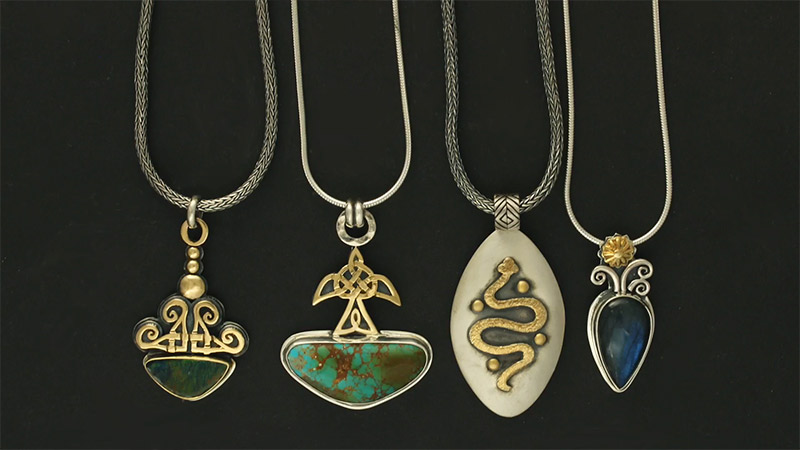
History of Artisan Crafted Jewelry
Artisan-crafted jewelry has a fascinating history that spans various civilizations and periods, reflecting the cultural, social, and economic contexts in which it emerged and evolved.
Ancient Civilizations: Egypt & Rome
Artisan craftsmanship in jewelry can be traced back to ancient civilizations like Egypt and Rome. Skilled artisans in these societies crafted intricate pieces using precious gold and silver, often embellished with gemstones like lapis lazuli and turquoise.
These pieces served as adornments and symbols of status, wealth, and sometimes religious or spiritual significance.
Middle Ages: European Guilds
During the Middle Ages in Europe, guilds played a crucial role in developing and regulating artisan crafts, including jewelry making. Guilds were associations formed by craftsmen within specific trades, such as goldsmithing or silversmithing.
Members of these guilds underwent rigorous training and apprenticeships under experienced artisans before they could become masters themselves.
This period they emphasized the importance of skill, tradition, and craftsmanship in artisanal production.
Native American Cultures
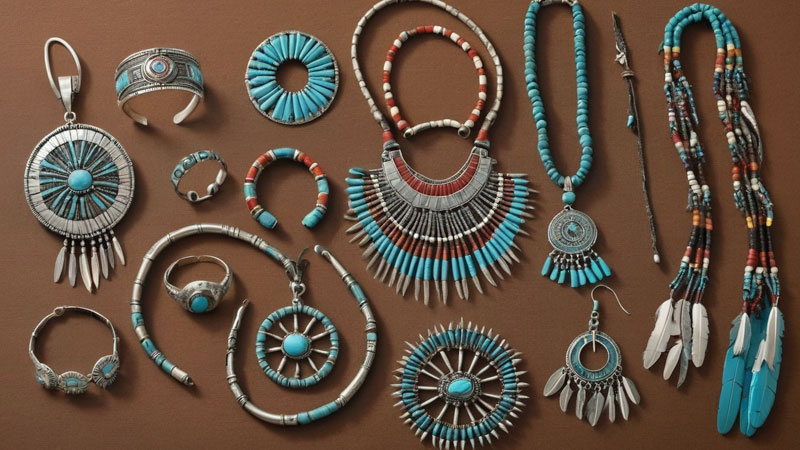
In Native American cultures, artisan-crafted jewelry held deep cultural and spiritual significance. Tribes like the Navajo and Hopi have a long history of creating intricate silverwork, while others specialize in beadwork or carving materials like bone or shell into beautiful ornaments.
Native American jewelry often incorporates symbolism and motifs inspired by nature, spirituality, and tribal traditions, making each piece unique and culturally rich.
Arts & Crafts Movement
The Industrial Revolution brought mass production methods, initially threatening traditional artisan craftsmanship, including jewelry making.
However, in the late 19th century, the Arts and Crafts Movement emerged as a reaction against industrialization’s adverse effects on design quality and labor conditions.
This movement celebrated handcrafted goods and sought to revive traditional artisanal techniques, including jewelry making, emphasizing the importance of individual creativity and craftsmanship.
Contemporary Revival
Despite the rise of mass production, there has been a contemporary revival of artisan-crafted jewelry. In today’s global market, there is a growing appreciation for unique, handcrafted pieces that tell a story and reflect the skill and creativity of the artisan.
Consumers value the authenticity, craftsmanship, and cultural significance of artisan-crafted jewelry, seeking out ethically made and sustainably sourced pieces.
Types of Artisan Crafted Jewelry
Artisan-crafted jewelry encompasses a wide range of styles and techniques, each reflecting the unique vision and skill of the artisan.
Here are some popular types of artisan-crafted jewelry:
Hand-Stamped Jewelry
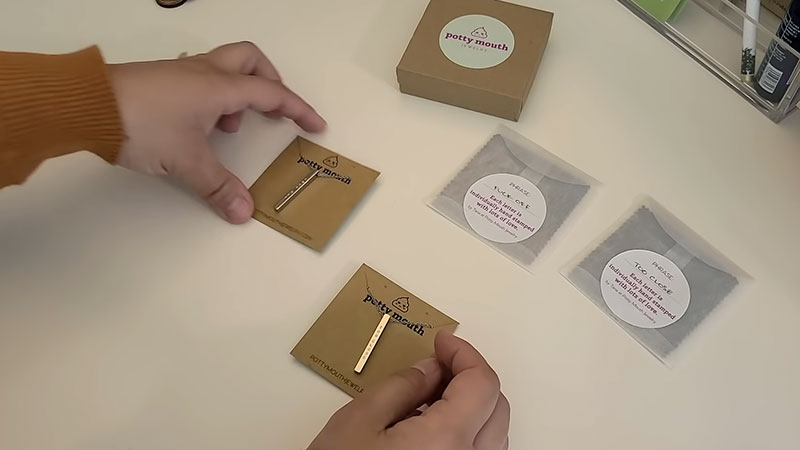
This type of jewelry involves using steel stamps and a hammer to imprint words, symbols, or designs onto metal surfaces. Each strike leaves a permanent impression, creating personalized and meaningful pieces with sentimental value.
Beaded Artisan Jewelry
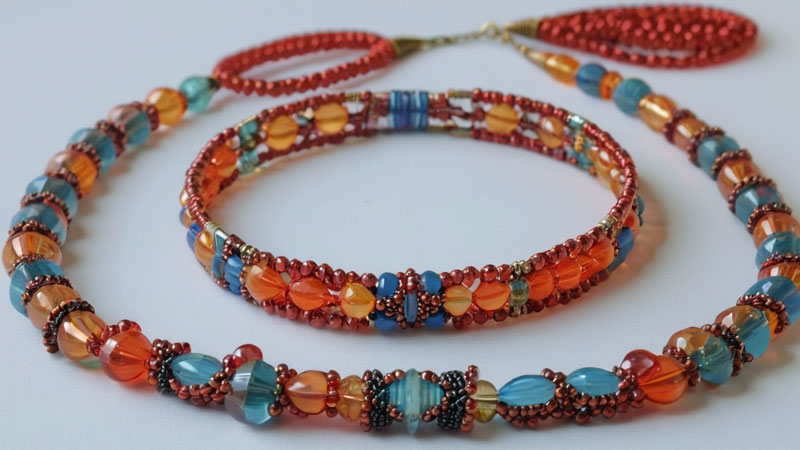
Beaded jewelry showcases the meticulous skill of threading tiny beads together to create intricate patterns and designs.
Artisans often use a variety of beads in different shapes, sizes, and colors to craft visually stunning pieces, such as bracelets, necklaces, and earrings.
Wire-Wrapped Jewelry
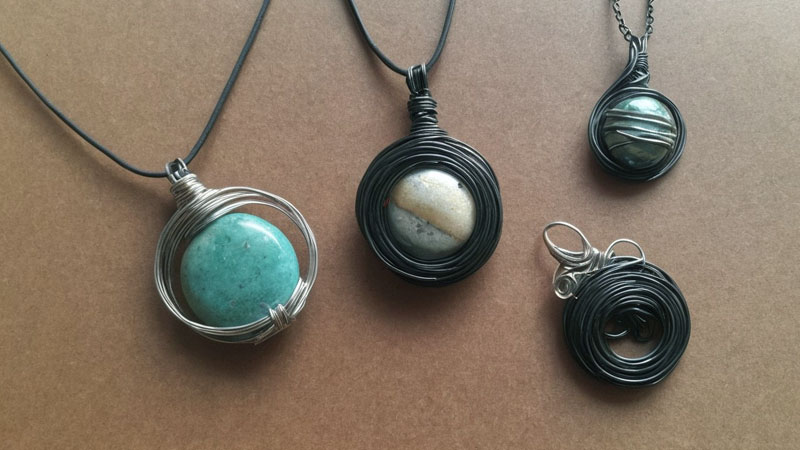
To create beautiful and intricate designs, wire-wrapped jewelry involves twisting, turning, and wrapping wires around gemstones, beads, or other elements.
This technique allows for creativity and versatility, as artisans can experiment with different wire gauges and wrapping styles to achieve unique looks.
Metal-Crafted Jewelry
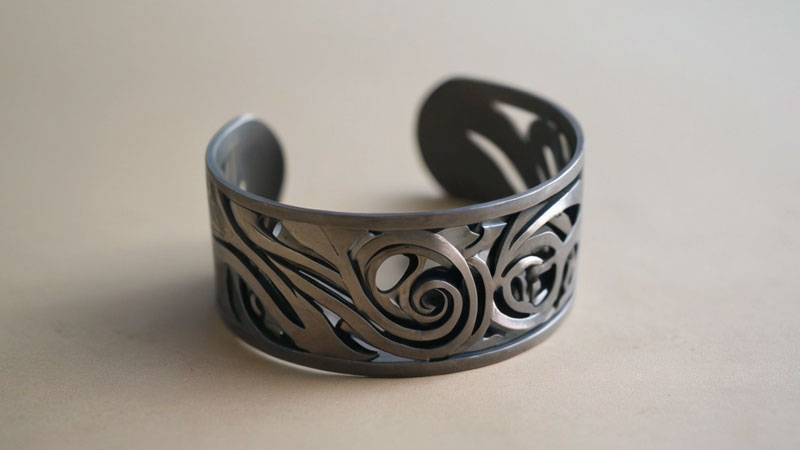
Metal-crafted jewelry encompasses a variety of techniques, including forging, sculpting, and engraving, used to shape and manipulate metals like sterling silver, copper, brass, and gold.
Artisans often combine traditional craftsmanship with contemporary design sensibilities to create pieces that range from delicate and ornate to bold and modern.
Enamel Jewelry
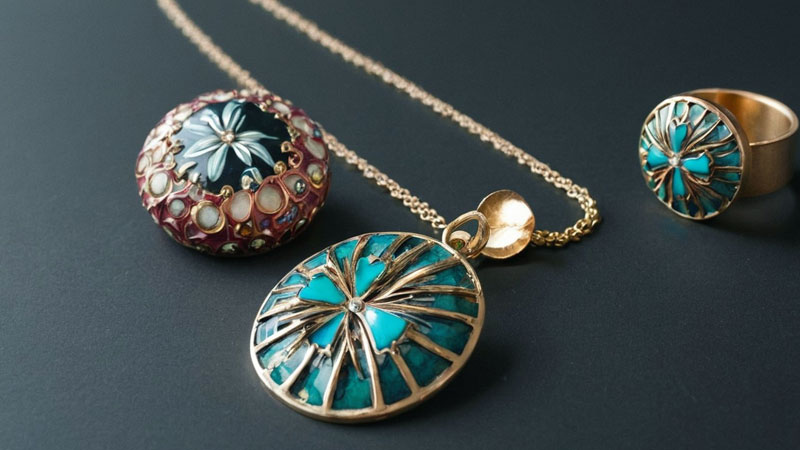
Enamel jewelry uses powdered glass on metal surfaces to create colorful and durable designs. Artisans use techniques such as cloisonné, champlevé, and plique-à-jour to create intricate patterns and imagery, producing vibrant and eye-catching pieces.
Mixed Media Jewelry
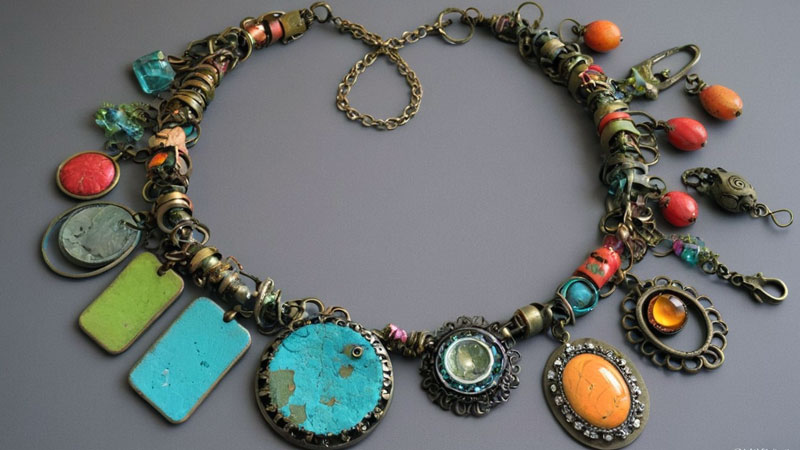
Mixed media jewelry combines materials and techniques to create unique and eclectic pieces. Artisans may incorporate elements such as fabric, leather, resin, wood, or found objects into their designs, resulting in visually striking and conceptually rich jewelry.
Lapidary Jewelry
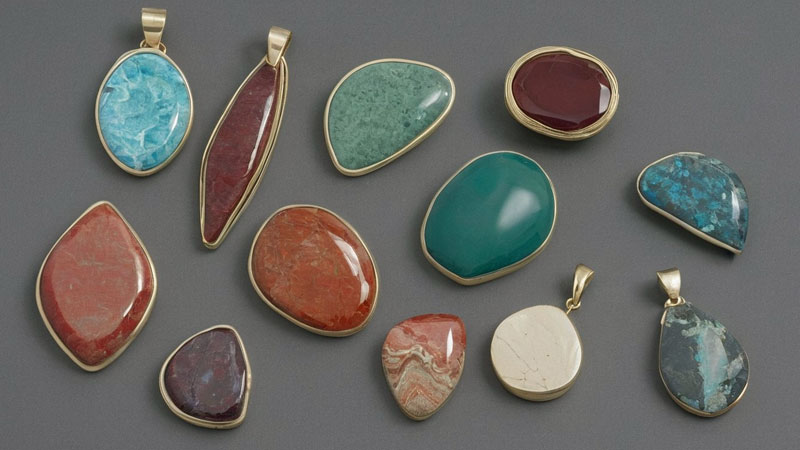
Lapidary jewelry involves cutting, shaping, and polishing gemstones to highlight their natural beauty. Artisans use lapidary techniques such as faceting, cabochon cutting, and carving to create gemstone-centered pieces that range from classic and elegant to bold and avant-garde.
Repurposed and Upcycled Jewelry
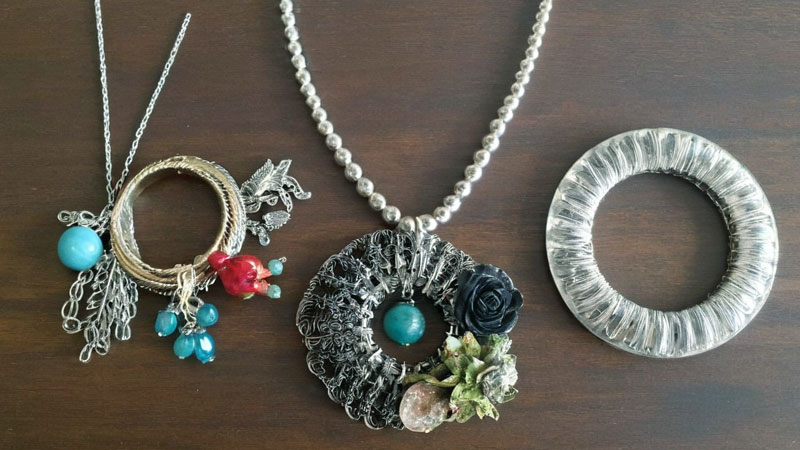
Artisans often use repurposed or upcycled materials like vintage beads, coins, keys, or watch parts to create sustainable and environmentally friendly jewelry. These pieces not only showcase creativity but also promote eco-consciousness and ethical consumption.
Materials Used in Artisan Crafted Jewelry
Artisan-crafted jewelry is renowned for its use of high-quality materials and the artisan’s dedication to handcrafting each piece with skill and passion.
Here’s a closer look at some of the materials commonly used in artisan-crafted jewelry:
Metals
Artisans often work with precious metals such as gold, silver, and platinum due to their beauty, durability, and malleability. These metals can be shaped, hammered, soldered, and engraved to create intricate designs and patterns.
Unconventional Materials
Artisans are known for their creativity and willingness to experiment with unconventional materials such as wood, glass, porcelain, and even recycled items.
These materials add unique textures, colors, and dimensions to jewelry pieces, resulting in one-of-a-kind creations that stand out from mass-produced designs.
Gemstones
Gemstones are prized for their beauty, color, and symbolism, and artisans often incorporate them into their designs to add sparkle and sophistication.
From classic favorites like diamonds, rubies, sapphires, and emeralds to less traditional choices such as moonstone or labradorite, gemstones come in a variety of shapes, sizes, and colors, allowing artisans to create pieces that are both visually stunning and meaningful.
Handcrafted Beads
Some artisans prefer handcrafted beads over commercially produced ones due to their distinctiveness and individuality.
These beads can be made from various materials, including clay, metal, or glass, and artisans often use them to add texture, color, and dimension to their designs.
To give you an idea about how varied the material palette can be in artisanal jewelry making, let’s look at this table:
| Material | Examples |
|---|---|
| Metals | Gold, Silver, Platinum |
| Unconventional Materials | Diamonds,Rubies, Sapphires, Emeralds, Moonstone |
| Gemstones | Diamonds, Rubies, Sapphires, Emeralds, Moonstone |
| Handcrafted Beads | Clay Beads, Metal Beads, Glass Beads |
Techniques in Artisan Crafted Jewelry
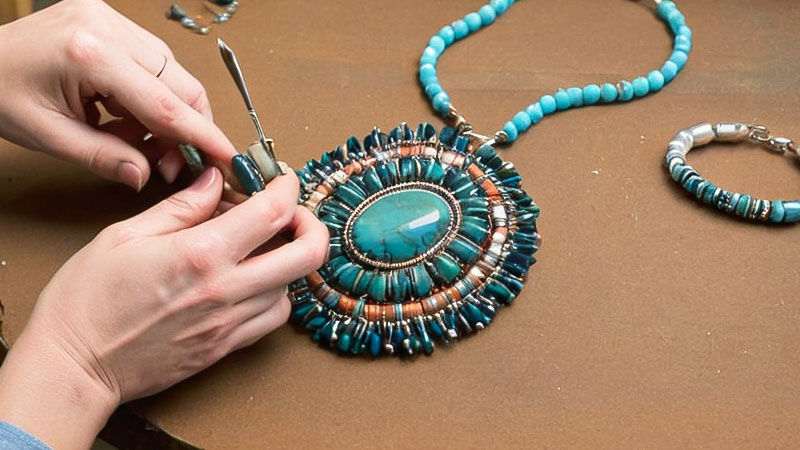
Artisan-crafted jewelry encompasses various techniques, each requiring skill, patience, and creativity.
Here are some commonly used techniques in creating artisan-crafted jewelry:
Hand Forging
This technique involves heating metal until it reaches a malleable state and then shaping it using hammers, anvils, and other tools.
Artisans carefully manipulate the metal to create unique textures, patterns, and forms, resulting in pieces that bear the distinct marks of handcraftsmanship.
Lost Wax Casting
Artisans create a model or pattern of the desired jewelry piece using wax during this process. They then encase the wax model in a mold material, such as plaster or investment, heated to melt, and remove the wax, leaving behind a cavity in the model’s shape.
Molten metal is poured into the mold cavity, allowed to cool and solidify, and the mold is broken away to reveal the cast metal piece.
This technique allows for creating intricate and detailed designs that may be difficult to achieve through other methods.
Beadweaving
Beadweaving involves using tiny beads to create intricate patterns and designs. Skilled artisans use techniques such as peyote stitch, brick stitch, and loom weaving to weave together beads into jewelry pieces such as bracelets, necklaces, and earrings.
Beadweaving allows for endless possibilities in design and can result in pieces that are both delicate and intricate or bold and statement-making.
Enameling
Enameling fuses powdered glass onto metal surfaces to create colorful and durable designs.
Artisans apply layers of powdered glass, known as enamel, to metal substrates and then heat them to high temperatures to melt and fuse the glass onto the metal.
This technique can result in vibrant colors, intricate patterns, and beautiful surface textures, making enamel a popular choice for adding color and detail to jewelry pieces.
How to Choose Artisan Crafted Jewelry?
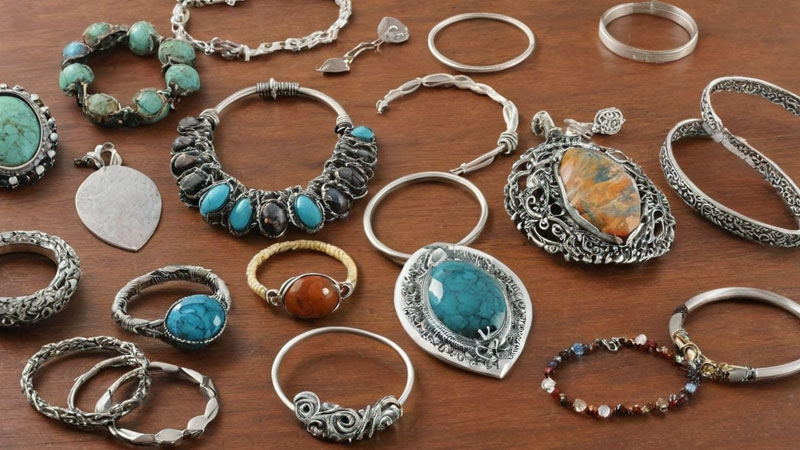
Choosing artisan-crafted jewelry is an art in itself, requiring an understanding of craftsmanship, personal style, and value.
Here’s a step-by-step guide on how to choose artisan-crafted jewelry:
Understand the Term ‘Artisan’
Artisans are skilled craftspeople who create items by hand. Artisan-crafted jewelry refers to pieces made with care and attention to detail rather than mass-produced in factories.
Prioritize Quality
Look for materials that are durable and will stand the test of time. Examine the craftsmanship closely to appreciate the effort and skill invested in creating each piece.
Know Your Style
Artisans have unique styles and approaches to their craft. Choose jewelry that resonates with your aesthetic, whether intricate beadwork, bold geometric designs, or delicate filigree.
Consider Usage
Think about where and how you’ll wear the jewelry. Whether for a formal event or daily wear, select pieces that complement your outfits and lifestyle.
Be Mindful of Price
Artisan-crafted jewelry often comes at a higher price point due to the quality of the materials and the time craftsmen invest. Remember that each purchase supports the livelihood and passion of the artist.
Connect with the Craft
Choosing artisan crafted jewelry is an intimate experience. Take the time to appreciate the artist’s vision and the artistry behind each piece.
By focusing on quality, understanding your style, considering usage, and being aware of price points, you can make a confident and meaningful choice in selecting artisan crafted jewelry.
Conclusion
Artisan-crafted jewelry is more than just adornments; it embodies the essence of craftsmanship, creativity, and human connection. Each piece, meticulously crafted by skilled artisans, tells a unique story woven through expert hands.
We honor traditional craftsmanship by embracing artisan crafted jewelry while celebrating personal expression and individuality.
These one-of-a-kind treasures offer unmatched uniqueness and charm, carrying within them fragments of the artist’s journey.
Beyond their aesthetic appeal, artisan-crafted pieces invite us to appreciate the laborious love poured into their creation.
So, whether for personal wear or as a heartfelt gift, choosing artisan-crafted jewelry enriches our lives with beauty, meaning, and a deeper connection to the artistry of the human hand.
Leave a Reply